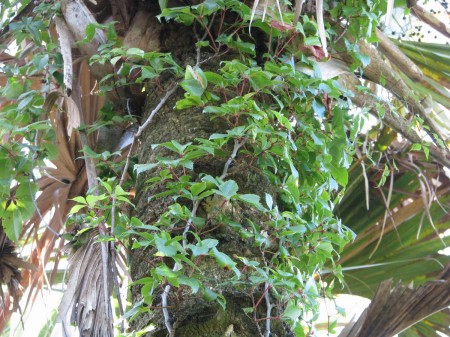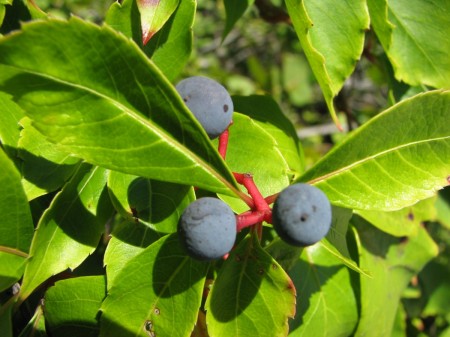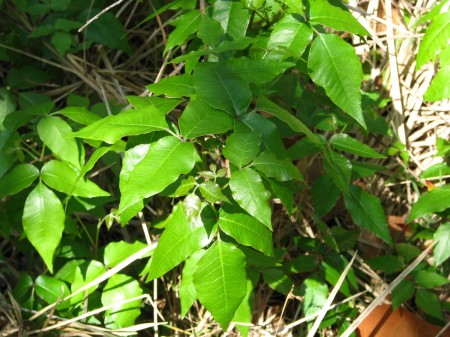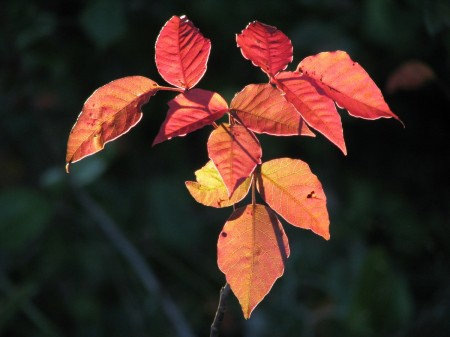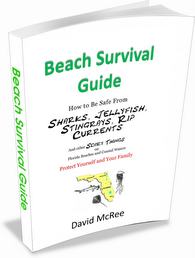
Poison Ivy on Sanibel Island. Taken in the parking lot of the Sanibel Captiva Conservation Foundation parking lot, five feet from my car’s front bumper.
If you’re going to be hanging around on Florida islands, you need to be able to recognize poison ivy so you can avoid it. It is a very versatile plant. It grows on the ground, in trees and on fences. Sometimes it can be everywhere. You don’t want to touch it–not even dead, dry leaves which can remain toxic for at least five years. And don’t let it brush against your clothes. Try not to walk on it. It will get on your shoes, then when you take your shoes off, the sap (which contains urishiol) will get on your hands. Often the itching and blisters do not appear for a week or even two weeks. By the time you start to itch, you’ll wonder what is causing it.

Some poison ivy leaves have a warty look to them, as though infected by their own toxicity. Note the shiny leaves with smooth edges.
Poison ivy has shiny green leaves with smooth edges (most of the time, however there can be a few serrations present). It characteristically has three leaflets on each leaf stem. Another vine that looks very similar to poison ivy is Virginia creeper, which typically has five leaflets on each leaf stem. The edges of the leaves on Virginia creeper tend to have at least a few serrations (saw-tooth edges). Both plants are found in the same locations and are easily confused with each other. Sometimes they intertwine on the same tree.

The Virginia creeper vine is easily confused with poison ivy. They both love to grow in cabbage palms. Note that each leaf has 5 leaflets with serrated edges. The degree of serration varies greatly. Some plants have very little.

Poison ivy and Virginia creeper often grow close to each other. The red square marks poison ivy; the green circles mark Virginia creeper. See the difference? Click the photo to enlarge for a better look.

Poison ivy with berries. I don’t have to tell you not to eat these, right? Photographed on Caladesi Island, FL.

Poison Ivy growing on the ground in Fort Desoto Park. This photo was taken in March when the plants were flush with new growth.

This poison ivy vine is making itself at home on a cabbage palm in Fort Desoto Park. It will grow on most any kind of tree or other support.

I photographed this monstrous poison ivy growing at Lighthouse Park on Gasparilla Island (Boca Grande). It’s pretty scary.
Similarly poisonous plants are poison oak and poison sumac, neither of which you are likely to encounter on the coastal Florida peninsula or islands. Perhaps in north central Florida and northwest Florida you’ll find some.
If you need information about treating a poison ivy rash visit http://poisonivy.aesir.com/view/welcome.html
